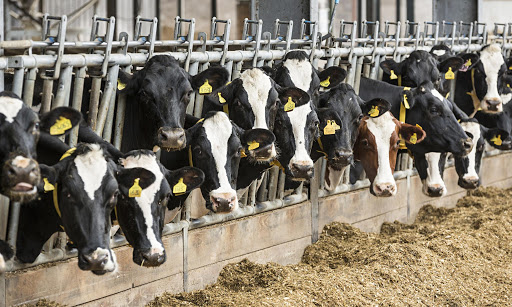Looking Behind the Curtain of Agribusiness
It’s not easy to make sense of current food practices in the U.S. How do we — and our government — support the status quo? How could we change?
More About Dairy Subsidies
A little while back, we asked a seemingly simple question: Why does your vegan yogurt cost so much more than dairy yogurt? The answer is not simple at all, but probably the most important contributing reason is that the U.S. government provides billions of dollars in subsidies to dairy farmers to help keep prices low.

It’s important to remember that the fantasy picture of “Old MacDonald’s Farm” no longer applies in the U.S. Most of us now know that 99 percent of U.S. farms are factory farms, where animals are raised in debilitating and cruel conditions. So, much as we might like to feel good about the struggling small farmer getting some help from the government, that’s not how it works. As Christoper Carter writes in The Spirit of Soul Food: Race, Faith and Food Justice , “The corporate farming industry projects the idea that farm subsidies are necessary in order to prevent small family farms from going out of business or from going into poverty in their desire to put food on America’s tables. However, small farms often receive little or no help from the programs approved and run by Congress.” Fifteen percent of farm operations received 85 percent of federal funding in 2016.
Subsidies to dairy (and other) farmers through USDA (U.S. Department of Agriculture) have been in place since 1933. They began as a necessary and largely successful effort to support farmers devastated by the Great Depression. Factory farming, of course, was in its infancy back then, and most of the farmers who received subsidies were not large corporations. In the 1950s, USDA began using subsidies as an incentive to mechanize farm production to produce surpluses that could be sold to foreign markets. As small farms went under, USDA did not promulgate any policies to reverse the trend. Ironically, it was believed that this process would eventually make agribusiness so profitable that it would no longer need subsidies.
But federal subsidies to farmers are now so entrenched that it’s difficult to imagine how they could be eliminated. And lest we oversimplify, here’s this from Christopher Carter: “It is also worth noting that while Congress phased some social welfare programs out of the [Agricultural Adjustment Act], the National School Lunch Program, which was also designed to combat nationwide hunger, was made permanent within the bill in 1946.”
In future posts, we’ll talk more about the difficulties that non-dairy and non-meat products face in the marketplace. And we’ll also ask: Who exactly does manufacture non-dairy yogurt (and other vegan products)? Does it really have to cost so much?
They Don’t Wait for the Cow to Die . . .

Sandra Miller sent us this reminder from a recent Washington Post article by Annie Midori Atherton called “How to Buy a Well-Made Shoe: “For those with ethical qualms about animal products, there are synthetic alternatives such as polyurethane . . . [and] if you’re not married to the aesthetic of leather, you can look to fiber materials.” Brands such as Vivaia sell for under $100 and are made from various synthetic materials, including hemp and recycled plastic bottles. Atherton goes on, “For a sustainable, high-quality leather alternative, Nicoline van Enter, the chief executive and a founder at Footwearlogy LAB, recommends shoes made with MIRUM — a plant-based, plastic-free material.”
Similar cruelty-free products are available to replace leather belts and wallets. Most leather is made from the hides of cows killed for food. If you don’t want to support factory farming, don’t give your dollars to leather products.
Keep the Recipes (and Restaurant Reviews) Coming!

We’d love to keep featuring a vegan recipe, restaurant review, or shopping tip each week. If you have an old favorite, or have tried something new recently, please write it up and send it to John or Katie. Desserts, salads, sandwiches, entrees . . . anything that tastes good!